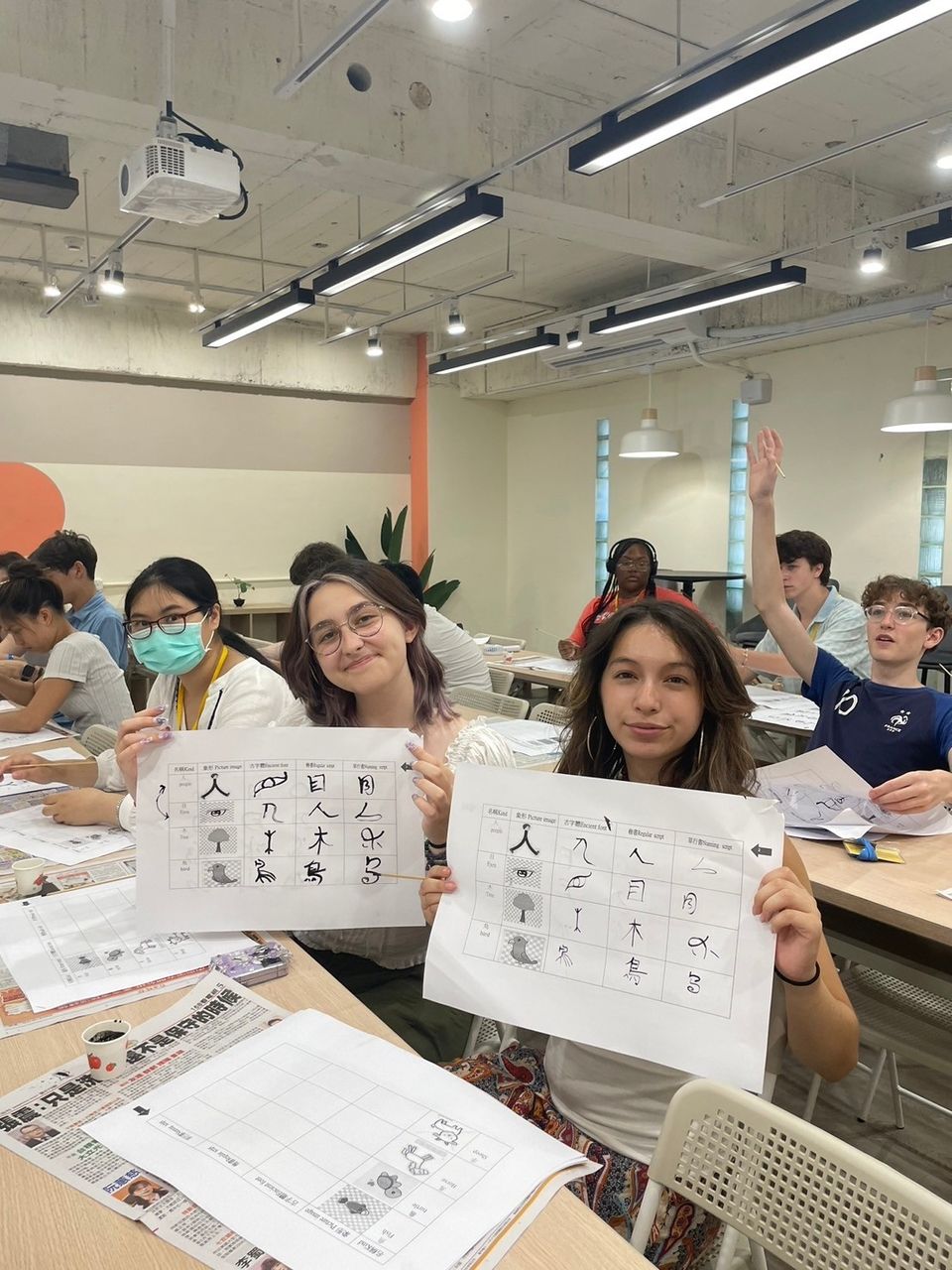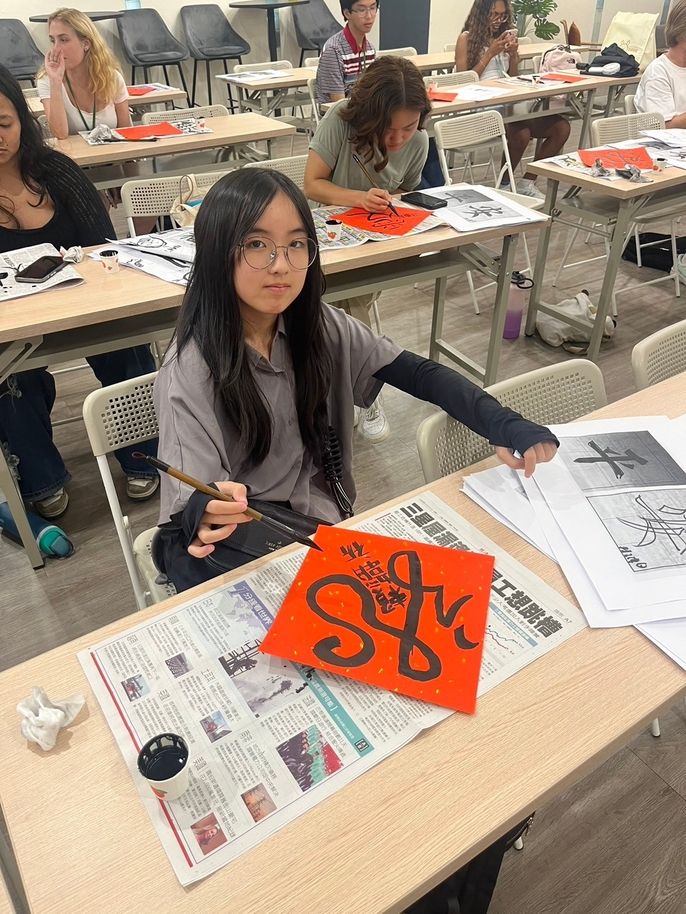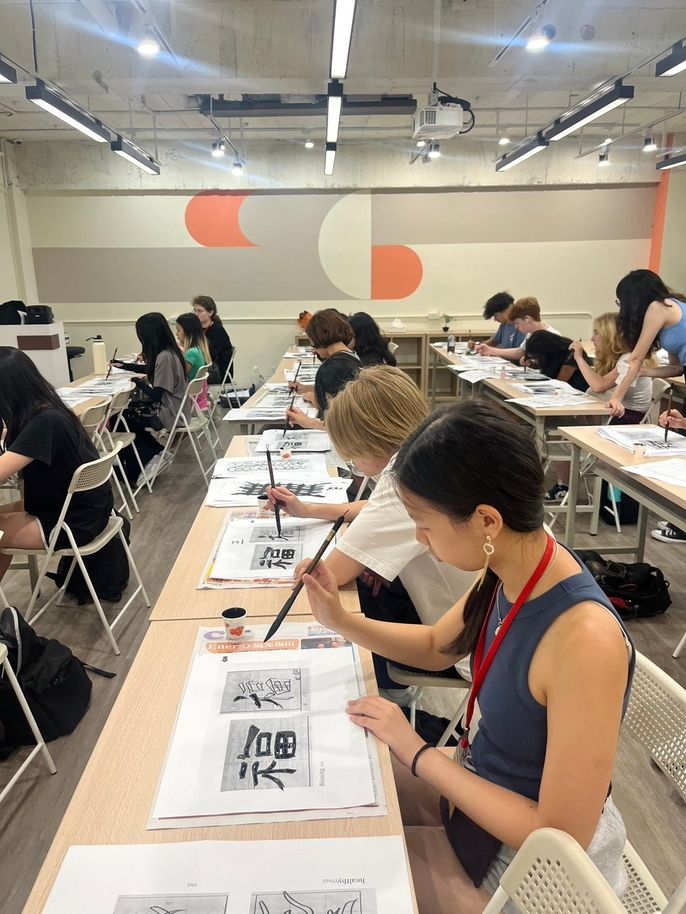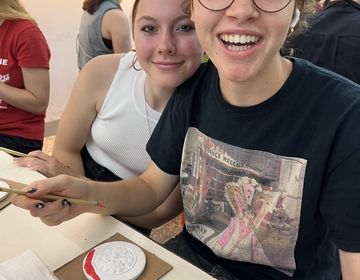Mastering Mandarin Calligraphy: Unveiling Ancient Artistry
This week, students immersed themselves in one of the world's oldest art forms, exploring a Chinese script with roots dating back over 3,000 years. There are five principal styles of calligraphy: seal script, clerical script, grass script, semi-cursive script, and standard script. Additionally, an ancient script, once etched on oracle bones for divination, adds another layer of historical intrigue. Since the 4th century, calligraphy has been revered and today, our CIEE students had the privilege to delve into its practice!

Students relished the comfort of an air-conditioned room this afternoon as they embarked on their calligraphic journey. They were introduced to the "Four Treasures of Study" 文房四寳, the essential tools of Chinese calligraphy: brush, calligraphy paper, ink, and inkstone. After familiarizing themselves with these tools and the diverse styles of Chinese calligraphy, the teacher provided an insightful overview of the evolution of Chinese characters through time. Students eagerly traced the origins of specific characters, practicing on special paper. For instance, they meticulously recreated "日" (sun) in its ancient form, which boasted more fluid, curved lines and a simple dot. Over centuries, these lines evolved into more angular shapes, and the dot transformed into a straight line. Notably, many students were charmed by the ancient rendition of "龜" (turtle), with some opting to immortalize it on their final calligraphy pieces to take home.
By examining the development of these characters, students gained a profound appreciation for the intent behind each stroke, a tradition that continues to resonate today. Every traditional Chinese character holds a unique narrative, whether depicting the feathers of a bird or the poise of a gentleman.
The calligraphy master then demonstrated the proper technique for holding a brush, emphasizing the importance of maintaining an elevated elbow and employing arm movements rather than wrist flicks. Our CIEE students diligently mimicked the teacher's instructions, navigating the technical intricacies of brushwork. While some students faced challenges, the teacher encouraged perseverance, underscoring that mastery in calligraphy typically demands years of dedicated practice.

In Taiwanese households, red paper Spring couplets are prominently displayed during Lunar New Year festivities—a testament to the enduring cultural significance of calligraphy. As the activity drew to a close, students eagerly took up the opportunity to craft their own spring couplets on vibrant red paper. With guidance, they positioned the paper at a diamond angle—a traditional practice believed to bring auspiciousness. This year being the year of the dragon, students were inspired to inscribe "龍" (dragon) in their preferred calligraphic style alongside the current year, 2024. Many also chose to grace their couplets with their Chinese names, adding a personal touch to their creations.
During the reflective session that followed, students shared their newfound insights into the rich history of Chinese characters and expressed a deepened appreciation for this ancient art form. Grateful for the guidance of the calligraphy master, they departed with their meticulously crafted couplets, eager to proudly display them and share their experience with their Taiwanese host families.
Related Posts
How I Studied Abroad as a Freshman in High School
Thinking about what to do the summer after your freshman year? Check out how one of our alumni studied abroad in Taipei, Taiwan at such a young age and how you can too!
Exploring the Rich Culture of Tainan: An American Students' Journey
In a rapidly globalizing world, experiencing diverse cultures has become an essential part of education. For a group of American students, a two-day and one-night trip to Tainan, Taiwan, offered... keep reading
Learning Made Sweet and Fun: Baking the Famous Pineapple Cake
This afternoon's cultural activity was one of my favorites! We enjoyed a refreshing break from the heat, learning how to bake pineapple cake. The students had a blast baking and... keep reading







